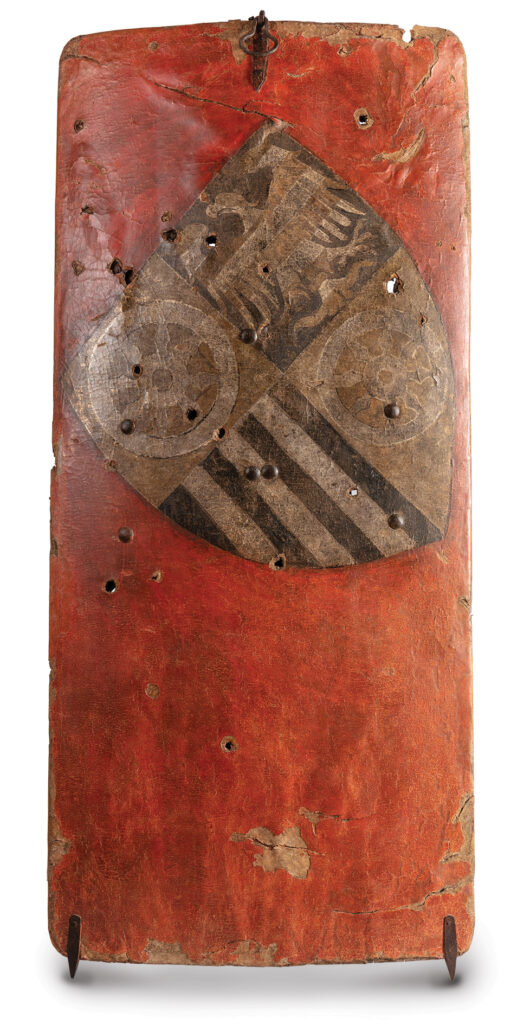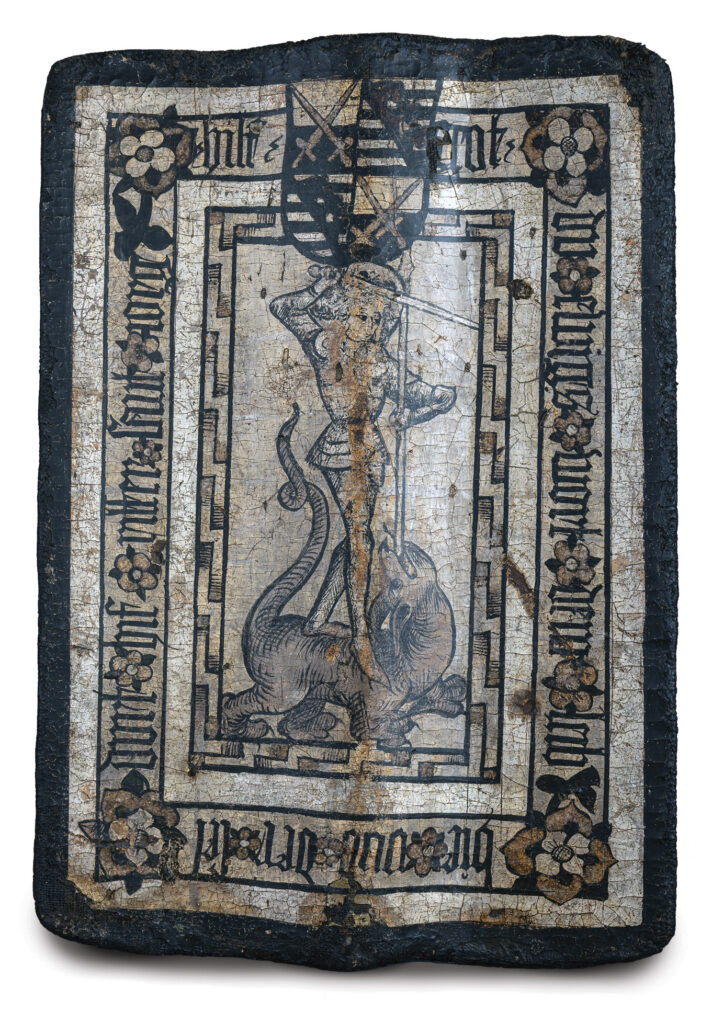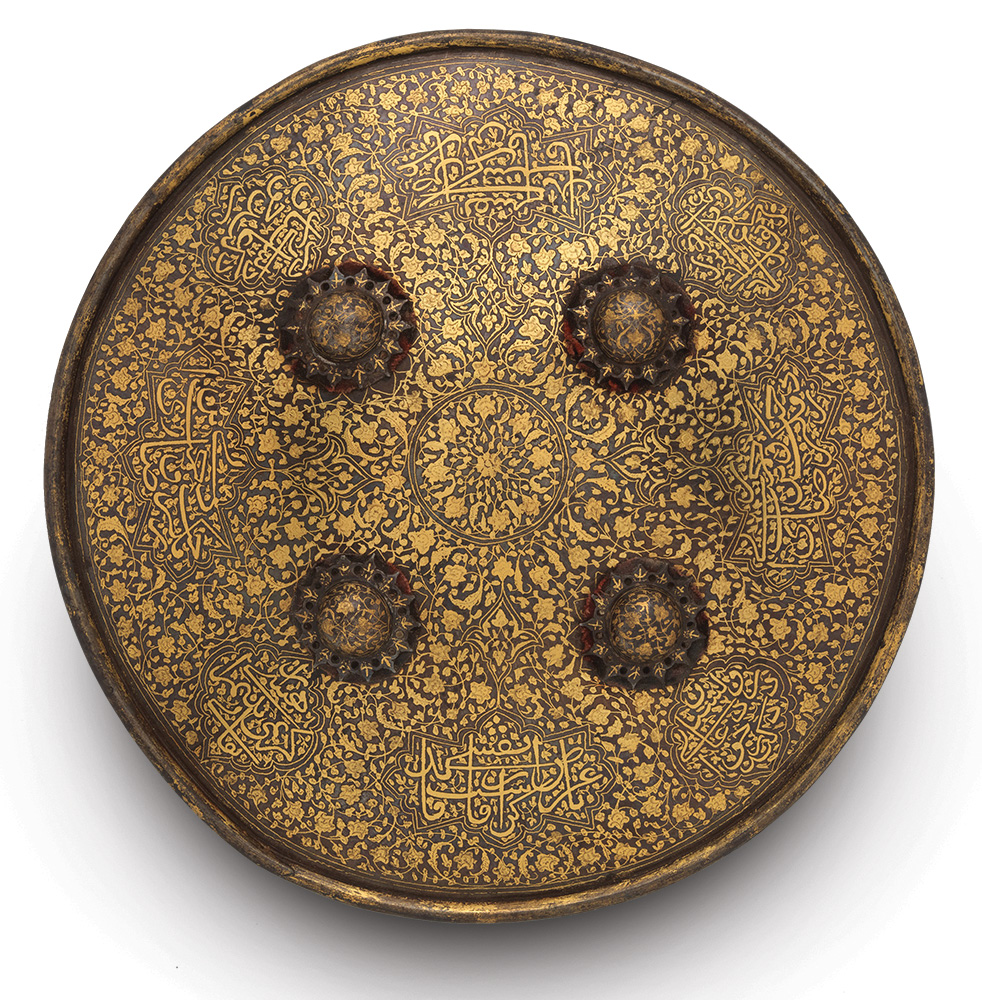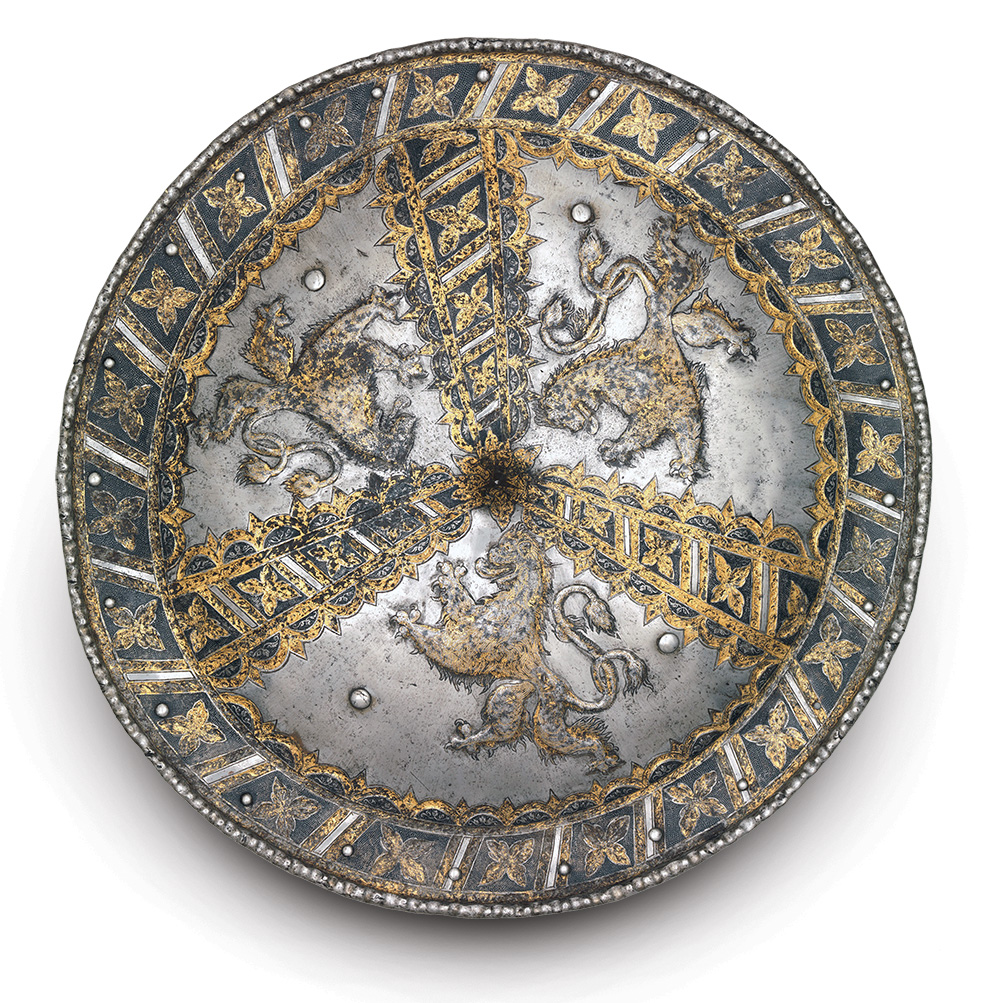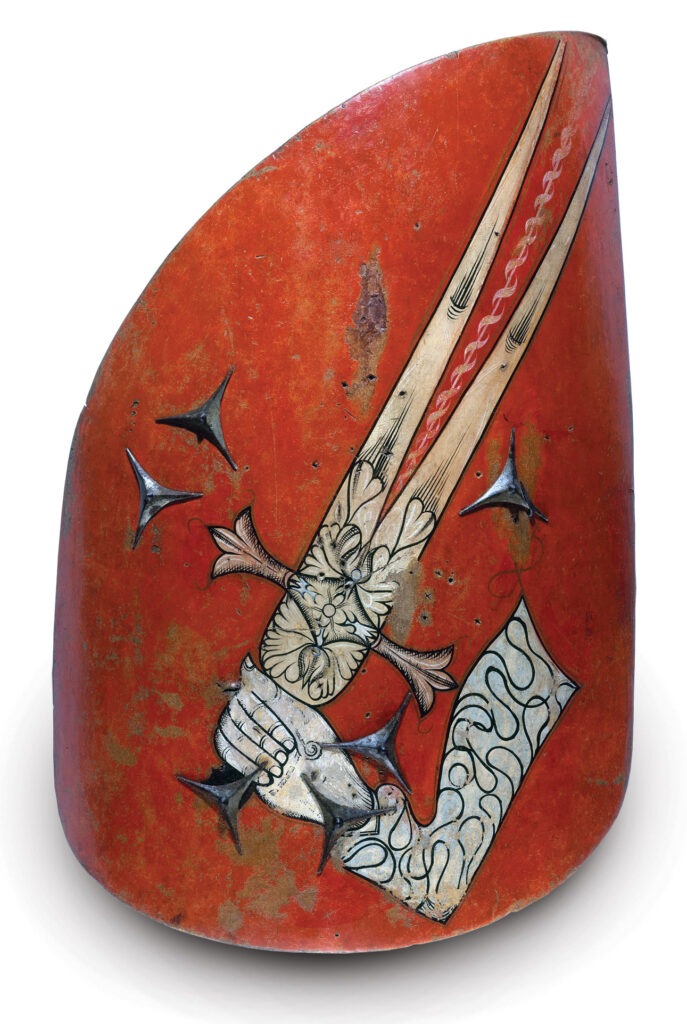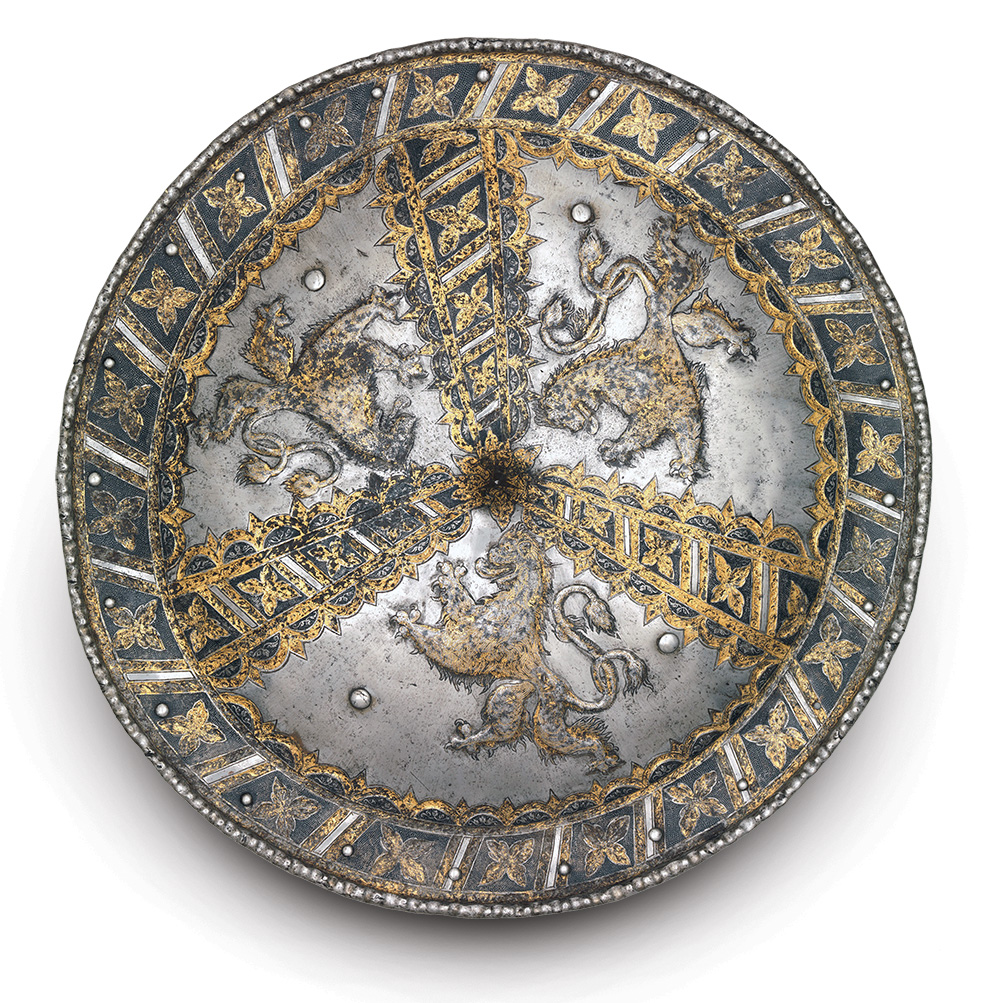Shields have existed for as long as warfare has. The function of a shield is to protect its wielder from bodily harm, such as from blunt weapons, edged weapons, polearms, projectiles and other dangers introduced in combat. Like warfare itself, shields evolved over time. Their shape and construction varied according to cultures, geography, the fighting style of their intended wielder, and the materials available for manufacture.
One common thread weaving the diverse history of shields together is that of symbolism. Archaeological evidence suggests that decorative designs have been applied to shields since prehistoric times. The Aztec created symbolic designs on shields, as did Aboriginal Australians and Zulu peoples.
Many times, decorative designs served a practical purpose: set color schemes, marks, or unit symbols served to identify warriors on the battlefield. However, shield symbolism often went beyond mere functionality to speak to an individual warrior’s ethos or to send a message to the enemy.
Shields and Spiritual Beliefs
Spiritual motifs are common elements of shield symbolism. These were used to invoke protection or power, broadcast strength or ability, or both. For example, the shields of ancient Greek hoplites depicted monsters to frighten enemies, or entities who could bestow power, such as mythological creatures, deities or emblems of their gods.
Ancient Roman shields were red, the color of war and military might, and often bore lightning bolts to signify Jupiter, the king of the Roman gods and symbol of Roman supremacy. Roman shields sometimes displayed wreaths of laurel leaves to signify victory as well as symbols of importance to particular legions or units. In medieval times, shields of Christian knights bore religious symbols, such as the cross or fleur de lis. Symbols used on shields took on such importance in Western Europe and Great Britain that the shield can be credited with inspiring the art of heraldry.
A Unique Art Form
The simple, ancient tool of the shield is thus a wellspring of human expression. Decoding the the images on shields, and even their shapes and colors, can reveal interesting things about the fighters of ages past—what powers commanded their loyalties, what they valued, what they believed in, and what they were trying to communicate to others, whether on ceremonial occasions or in the thick of violence on the battlefield.
